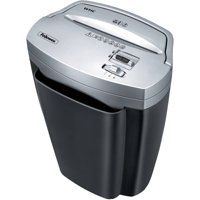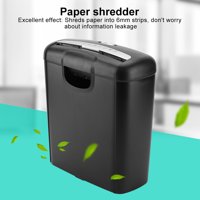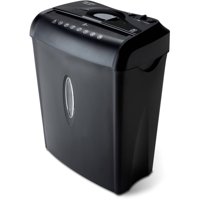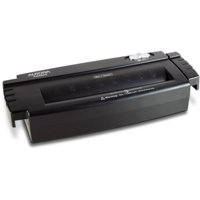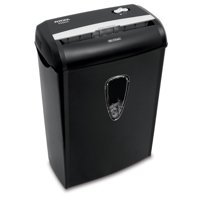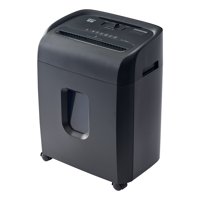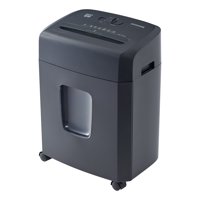Refine by
|Sort by
|Featured Item
- Shreds up to 11 sheets per pass
- 0.16" x 1.38" crosscut particles
- Safety Lock disables shredder for added protection
- Best SellerSponsored ProductCurrent Price$4560.00$45.60Sold & shipped by INTEK America, IncFree delivery
- Sponsored ProductProduct TitleSentinel On Guard 6-Sheet Crosscut Shredder FX62BCurrent Price$2867.00$28.67Sold & shipped by INTEK America, IncFree delivery
- Current Price$2818.00$28.18Sold & shipped by STORE #1, LLCFree delivery
- Best SellerCurrent Price$3266.00$32.662-day deliveryon orders $35+Free pickup todayGift eligible
- Current Price$12198.00$121.982-day deliveryon orders $35+Gift eligible
- Current Price$2157.00$21.57Free delivery on orders over $35
- Product TitleAurora 8-Sheet Cross-Cut Paper Shredder, BlackCurrent Price$2742.00$27.42Free delivery on orders over $35
- Best SellerCurrent Price$7209.00$72.09Free delivery
- NewCurrent Price$7215.00$72.152-day deliveryon orders $35+Gift eligible
- NewCurrent Price$6395.00$63.95Free deliveryFree pickup todayGift eligible
How to choose a shredder
Useful in both home and office settings, shredders can help you ensure that sensitive information doesn't get into the wrong hands. There are plenty of different options to consider, and you'll also need to determine your security needs and budget.
Consider what cut type you need
No matter what differences there are between different shredder models, they all have something in common: cutting. However, there's more than one way for shredders to destroy documents and other materials. Cut type determines the degree to which materials get destroyed, meaning they offer differing levels of security.
- Strip cut: This is the most basic type of shredder. As the name implies, strip-cut shredders cut materials into thin strips. These strips are too thin to be informative on an individual basis, making them more effective than simply tearing a document in two. However, a motivated person could find individual strips from a pile and reassemble the documents. Though it's unlikely, the fact that someone can reassemble the strips means that these shredders are generally best when document destruction is a good idea but isn't necessarily a matter of extreme security. If you're looking for a shredder to use at home, you'll probably do well with this level of security.
- Cross-cut: Stepping up one level from strip cutting, cross-cut shredders provide an extra level of security by cutting in two directions. This results in smaller pieces that are much harder to assemble. Again, though, a person with enough time and motivation could reassemble a document destroyed by cross-cut shredding. It would take much more time to put a document that's been destroyed this way back together, which makes cross-cut shredders more thorough in their approach to document destruction. This is a potential option for small businesses that deal with some sensitive information but don't necessarily deal with significant security risks in their paperwork.
- Micro-cut: As the most thorough form of shredding available, micro cutting is the best way to ensure that someone can't reassemble your documents. These shredders cut materials into tiny little pieces that don't provide enough information to realistically allow someone to put them back together. Think individual letters rather than full or partial words. People with the highest security needs should focus on micro shredders over other options.
Additional considerations
While cut type is an important main consideration, there are other important features to think about when shopping for a shredder. These additional considerations can dictate how easy it is to use your shredder the way you need to.
- Sheet capacity: Shredders typically have a limit on how many pages you can feed in at once. Lower sheet capacities are fine in situations where your shredding needs are pretty infrequent, but if you find yourself needing to destroy documents on a regular basis, look into higher-capacity models. A higher sheet capacity can save you considerable time on large document-destruction jobs.
- Additional shredding capabilities: Some shredders can only handle paper, while others are designed to take plastic and other thick materials in addition to paper. Having a shredder that can destroy plastic means you can shred things like credit cards or CDs containing important data. When shredding documents with staples and other small metal bits, make sure the shredder you choose specifically states that it can handle metal. Getting a shredder that can handle staples can also be highly convenient.
- Size and portability: The shredding mechanism on even a small shredder is likely to be quite bulky and heavy because it contains a number of sturdy metal blades. This means that shredders are typically heavy for their size, and that large-capacity shredders can weigh 40 pounds or more. Take a look at overall dimensions, including weight, before choosing a shredder so you can make sure you have space for the model you purchase. When buying a large, heavy model, look into designs that feature casters for easy movement from place to place.
Shredder accessories
You may also want to purchase some accessories for your shredder to ensure continuous smooth operation. Read your shredder's user manual before you pick out accessories so you can be sure to buy the right item.
- Lubricant: Shredder blades can jam fairly easily, and it's important to keep them in good shape to avoid damaging the machine. Lubricant oils and sheets are available to help keep your shredder's blades sharp.
- Bags: Some shredder manufacturers sell specially made waste-collection bags that fit specific models from their product lines. These bags fit into the shredder's bin and make it easy to collect shredded materials and dispose of them without spilling.
